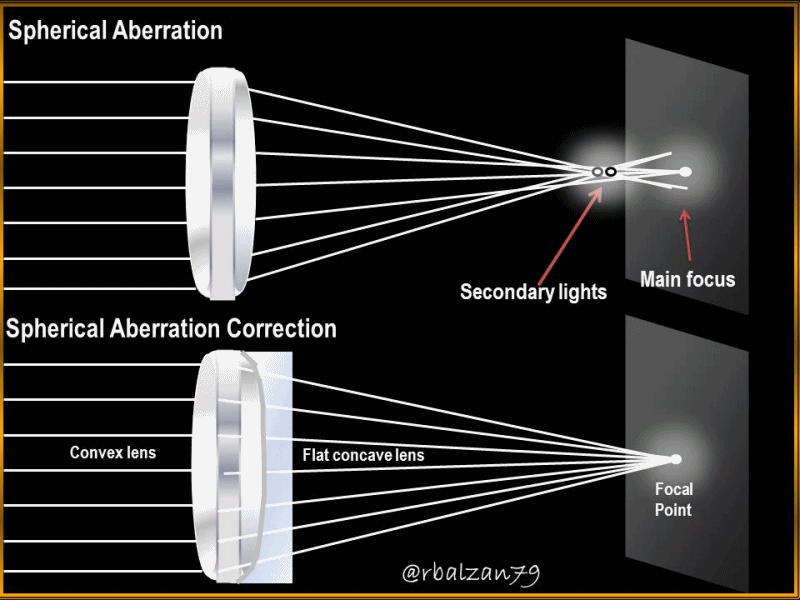Technology in the study of light / Spherical lens aberration

Introduction
In previous articles we have been related to the phenomenon of light and its application in different types of machines, tools or devices of artificial origin, among which we have found the lenses, and the same are essential elements of various optical instruments to treat the light rays incident on these, it is important to note that the light rays are responsible for transporting any type of images to a particular receiving screen or photosensitive surface to the light of any optical device and likewise to our eyes, more specifically to our natural receiving screen as is the retina.
When we refer to particular optical systems such as lenses it is important to always keep in mind the phenomenon of refraction, refraction is observed when light passes from one medium to another, and where the speed of its propagation is affected causing the rays to bend or refract by the loss of speed, this is done by the lenses, that is, refract the light rays once they pass through them.
In some cases we can find that the lenses have some kind of inconvenience when projecting the image that carry the rays that they refract, this is called aberrations of the lenses, and in previous articles we analyzed the chromatic aberration and this time we will analyze in general the spherical aberration of convergent lenses, this type of lens converge the light rays at a single point which we call focal point, but sometimes this does not happen in this way, and therefore, secondary focal points are generated.
This phenomenon is generally due to the degree of sphericity of such converging lenses, therefore, the rays closer to the central axis will converge at the same point or as close as possible, however, the opposite will occur with those rays closer to the edge of such lenses resulting in the spherical aberration of a converging lens, whose formation and correction is observed in the gif at the beginning of this article with the combination of a converging lens (biconvex) with a diverging lens (plano-concave).
Conclusion
The study of light has provided us with essential knowledge in any type of phenomenon developed in the process of generating images both in artificial devices and in our own natural optical system, these learnings transformed and applied by the field of technology in different elements such as the lenses that we see in the gif at the beginning of this article.
In this way we continue to demonstrate that the science-technology nexus has a great influence in any area of our existence, and we notice this with each passing day with greater force due to the constant evolution of new techniques in the generation of materials for the manufacture of any component element of certain optical instruments, whether individual or composite.
Until another opportunity my dear and appreciated readers.
Note: The images are of my authorship, made using the Power Point application, and the animated gif was made with the Photoscape application.
Recommended Bibliographic Reference

Your post has been voted as a part of Encouragement program. Keep up the good work!
Try https://ecency.com and Earn Points in every action (being online, posting, commenting, reblog, vote and more).
Boost your earnings, double reward, double fun! 😉
Support Ecency, in our mission:
Ecency: https://ecency.com/proposals/141
Hivesigner: Vote for Proposal
Thank you for your valuable support. Best regards.
Congratulations @rbalzan79! You have completed the following achievement on the Hive blockchain and have been rewarded with new badge(s) :
You can view your badges on your board and compare yourself to others in the Ranking
If you no longer want to receive notifications, reply to this comment with the word
STOPCheck out the last post from @hivebuzz:
hi dear @rbalzan79
congratulations for that image look's very good, I had to read your article 2 times to understand it, the scientific articles are very entertaining and I hope that more experiments and studies of this type and with other approaches are carried out in order to better understand the world and the universe.
Greetings friend @ramsesuchiha.
Thanks for your visit, the science-technology nexus has given us any kind of understanding of our environment among it the understanding of the essential phenomenon of light and all those optical elements such as lenses and their treatment to the light rays when passing through those optical elements, where, phenomena such as spherical aberration can be generated.